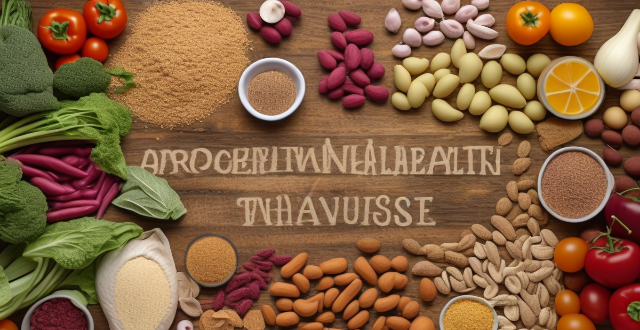The text provides tips for combining different food groups in one meal to ensure a balanced diet. It suggests starting with a base of whole grains, adding protein sources like lean meats or beans, including vegetables and fruits, incorporating healthy fats, and getting creative with flavors and textures. Examples are given for each food group and ways to add variety. The emphasis is on the importance of variety and balance in meals.

Tips for Combining Different Food Groups in One Meal
Combining different food groups in one meal is an excellent way to ensure that you are getting a balanced diet. Here are some tips to help you create a well-rounded meal:
1. Start with a Base of Whole Grains
Whole grains like brown rice, quinoa, or whole-wheat pasta provide complex carbohydrates and fiber, which are essential for a healthy diet. They also make a great base for adding other food groups.
Examples of Whole Grains:
- Brown Rice
- Quinoa
- Whole-Wheat Pasta
- Oatmeal
- Barley
- Rye
- Millet
2. Add Protein
Protein is essential for building and repairing tissues in the body. It's also crucial for maintaining muscle mass as we age. When combining foods, try to include a protein source such as lean meats, fish, beans, or nuts.
Examples of Protein Sources:
- Chicken
- Fish (like salmon or tuna)
- Beans (like black beans or chickpeas)
- Tofu
- Nuts (like almonds or walnuts)
- Eggs
- Greek Yogurt
3. Include Vegetables and Fruits
Vegetables and fruits are packed with vitamins, minerals, and antioxidants that are essential for good health. Aim to fill half your plate with vegetables and fruits.
Examples of Vegetables and Fruits:
- Broccoli
- Spinach
- Carrots
- Apples
- Berries
- Oranges
- Bananas
- Sweet Potatoes
4. Don't Forget Healthy Fats
Healthy fats are necessary for brain function and cell growth. They also help absorb certain vitamins. Include sources of healthy fats like avocado, olive oil, or nuts in your meal.
Examples of Healthy Fats:
- Avocado
- Olive Oil
- Nuts (like almonds or walnuts)
- Seeds (like chia seeds or flaxseeds)
- Fish (like salmon, which is high in omega-3 fatty acids)
5. Get Creative with Flavors and Textures
Don't be afraid to experiment with different flavors and textures when combining food groups. This will not only make your meals more enjoyable but also help ensure you're getting a variety of nutrients.
Examples of Ways to Add Flavor and Texture:
- Roast your vegetables with herbs and spices.
- Add crunch to your salad with nuts or seeds.
- Use citrus fruits to add acidity and freshness to dishes.
- Incorporate different cooking methods, like grilling, roasting, or sautéing.
By following these tips, you can create meals that are not only delicious but also nutritionally balanced. Remember, variety is key when it comes to combining different food groups in one meal. So don't be afraid to mix and match!